Why visit Japan?
Japan is a world apart: a cultural Galápagos where a unique civilization blossomed; and today thrives in delicious contrasts of traditional and modern. The Japanese spirit is strong, warm and incredibly welcoming
The wonders of Japan’s natural world are a well-kept secret. The hiking in the Japan Alps and Hokkaidō is world class, and with an extensive hut system you can do multiday hikes with nothing more than a knapsack on your back. Down south, the coral reefs of Okinawa will have you wondering if you have somehow been transported to Thailand. And you never have to travel far in Japan to get out into nature: in cities like Kyoto, a few minutes of travel will get you into forested mountains.
Savoring the delights of Japanese cuisine on its home grass is half the reason to come to Japan and you can easily build an itinerary around regional specialties and inspiring restaurants. Eat just one meal in a top-flight Tokyo sushi restaurant and you will see why. The Japanese attention to detail, genius for presentation and persistence on the finest ingredients results in food that can literally change your idea of what is possible in the culinary arena.
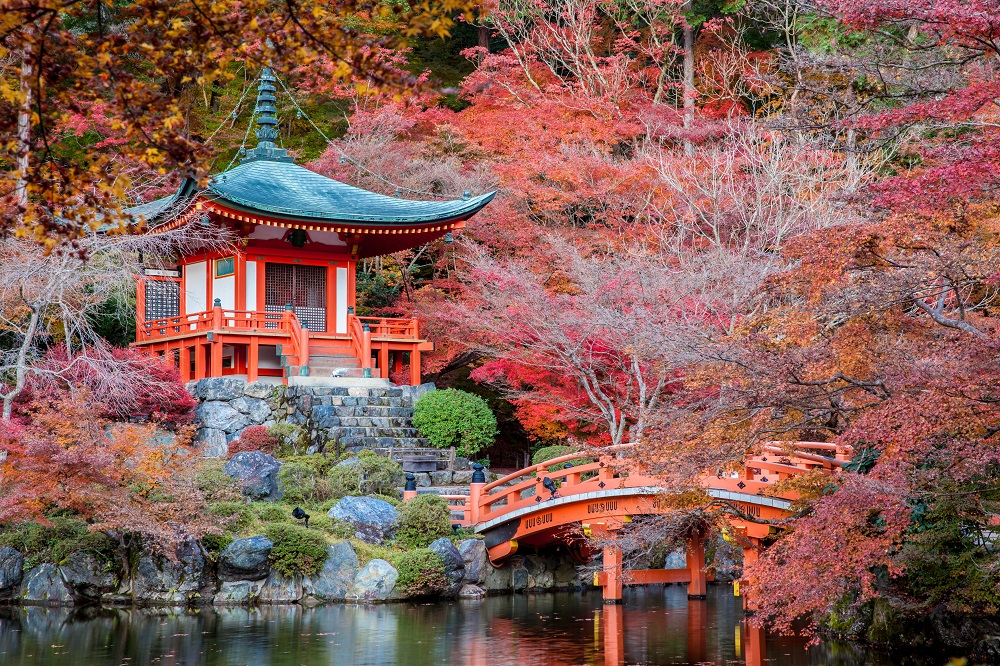
What does Japan bring in mind?
Mount Fuji
The highest mountain in Japan at 3,776 meters, the volcano’s exceptionally symmetrical cone is a well- known symbol of Japan and it is frequently depicted in art and photographs, as well as a popular tourist attraction for sightseers and climbers. An estimated 200,000 people climb Mount Fuji every year. The ascent can take anywhere between three and eight hours while the descent can take from two to five hours.
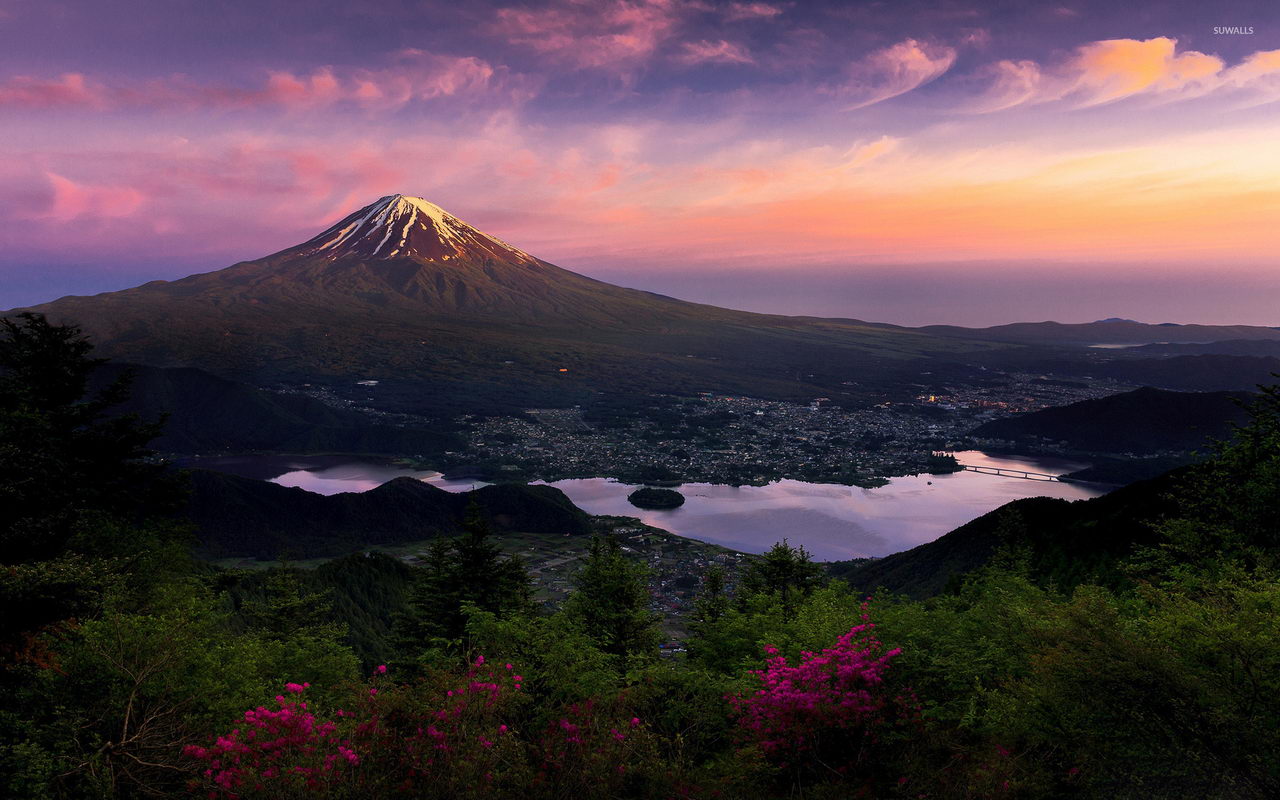
|
Golden Pavilion Kinkaku-ji or the Temple of the Golden Pavilion is the most popular tourist attraction in Japan and Kyoto. The pavilion was originally built as a retirement villa for Shogun Ashikaga Yoshimitsu in the late 14th century. Unfortunately, the pavilion was burnt down in 1950 by a young monk who had become obsessed with it. Five years later, the temple was rebuilt as an exact copy of the original. The pavilion is covered in gold leaf which highlights the reflection of the pavilion in the pond and the pond’s reflection on the building. |
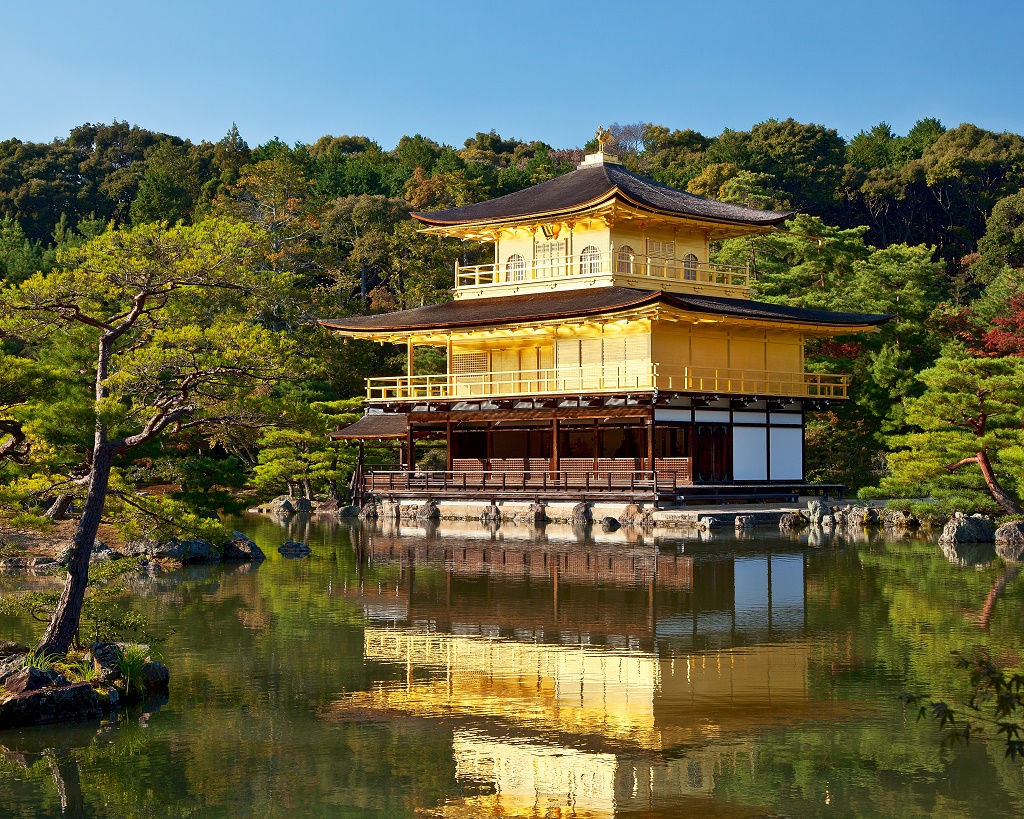 |
Tour Hiroshima’s Peace Memorial Park and Museum
Dedicated to victims of the atomic bombing of 1945, the Peace Memorial Park and Museum are touching and moving monuments to the horrors of nuclear weapons. The disfigured frame of the park’s A-Bomb Dome, one of the few buildings in central Hiroshima to survive the blast, serves as a vivid reminder of the destruction that occurred to the city.

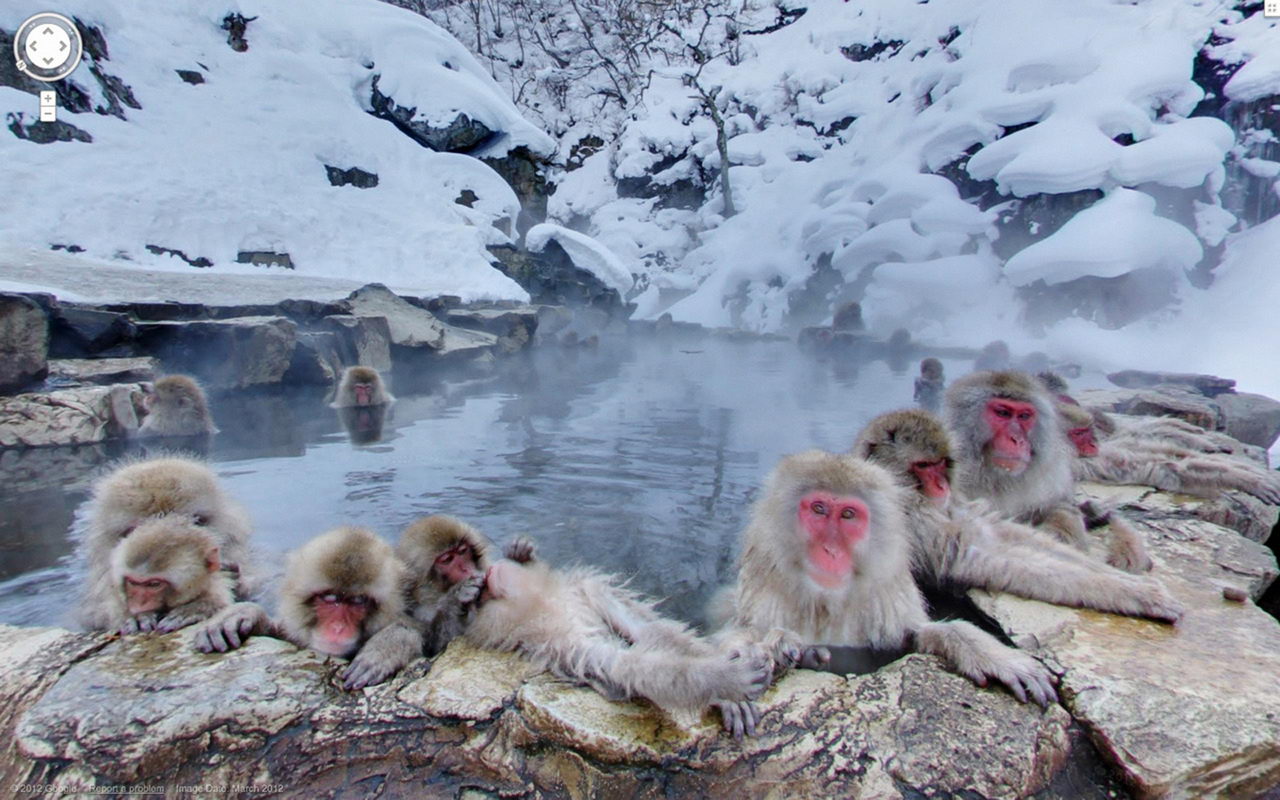 |
Jigokudani Monkey Park A famous hot spring area near Nagano; the name Jigokudani (meaning “Hell’s Valley”), is due to steam and boiling water that bubbles out the frozen ground, surrounded by steep cliffs and formidably cold forests. It is famous for its large population of wild Snow Monkeys that go to the valley during the winter when snow covers the park. The monkeys descend from the steep cliffs and forest to sit in the warm hot springs, and return to the security of the forests in the evenings. |
The Kiyomizu-dera
A Buddhist temple that is located in Eastern Kyoto; an indoor waterfall fed from the outside river keeps the temple in harmony with nature and not one nail was used in construction.
While locals used to jump off the edge to have a wish granted (with a survival rate of 85.4%), modern visitors can enjoy the shrines and talismans and artwork on display without risking life.

|
The Great Buddha of Kamakura A colossal outdoor representation of Amida Buddha, one of Japan’s most celebrated Buddhist figures. |
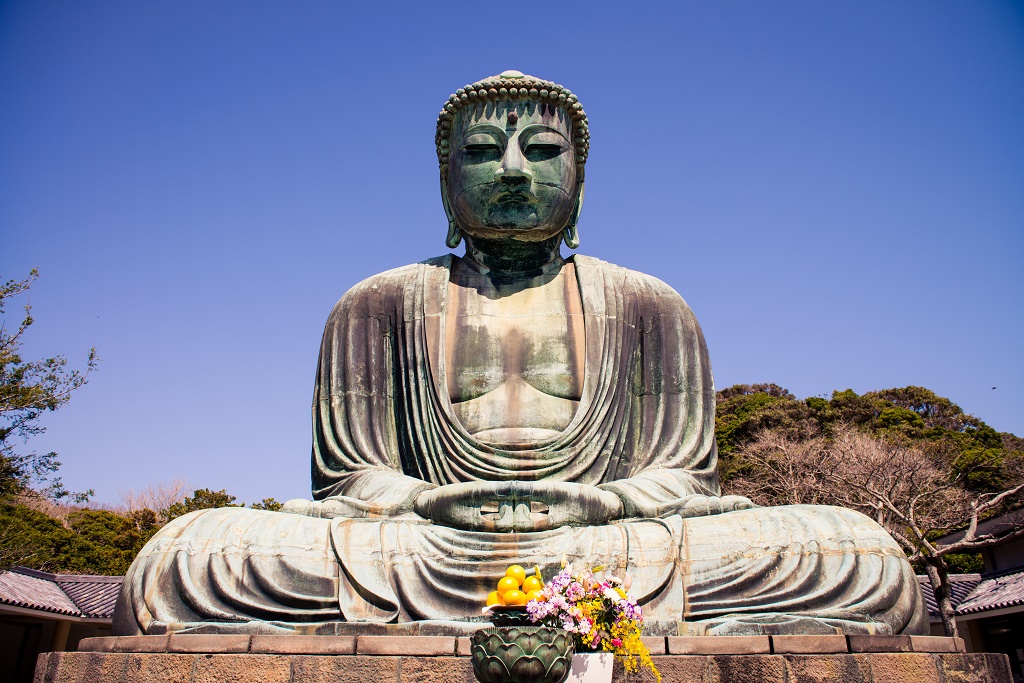 |
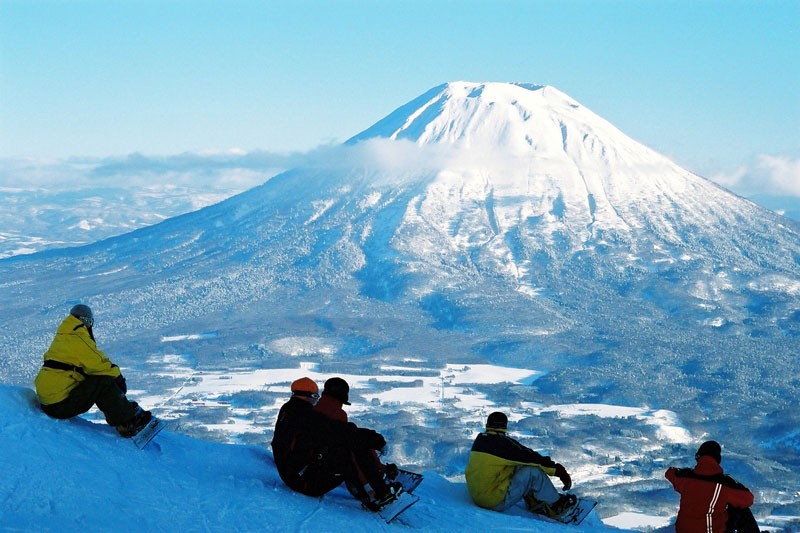 |
Ski Niseko This small ski resort in Hokkaido boasts the finest powder in the country and three major ski resorts: Niseko Village, Niseko Annupuri, and the Grand Hirafu/Hanazono. The allure is prime backcountry powder and ample opportunities for ice climbing, skiing and boarding through virgin snow. Niseko also has year-round draw- mineral-rich hot springs perfect for soaking away aches and pains from a day on the slopes. |
Tokyo’s Old East Side
Sensoji, a Buddhist temple in Asakusa, is about as touristy as it gets in Tokyo. Head a few blocks in any direction, and you will find Hanayashiki Amusement Park that is home to retro rides that include the country’s first rollercoaster. The area also teems with good watering holes like Kamiya Bar, where the local cocktail is a legendary blend of brandy, gin, and curaçao rightly named Denki Bran (Electric Brandy).
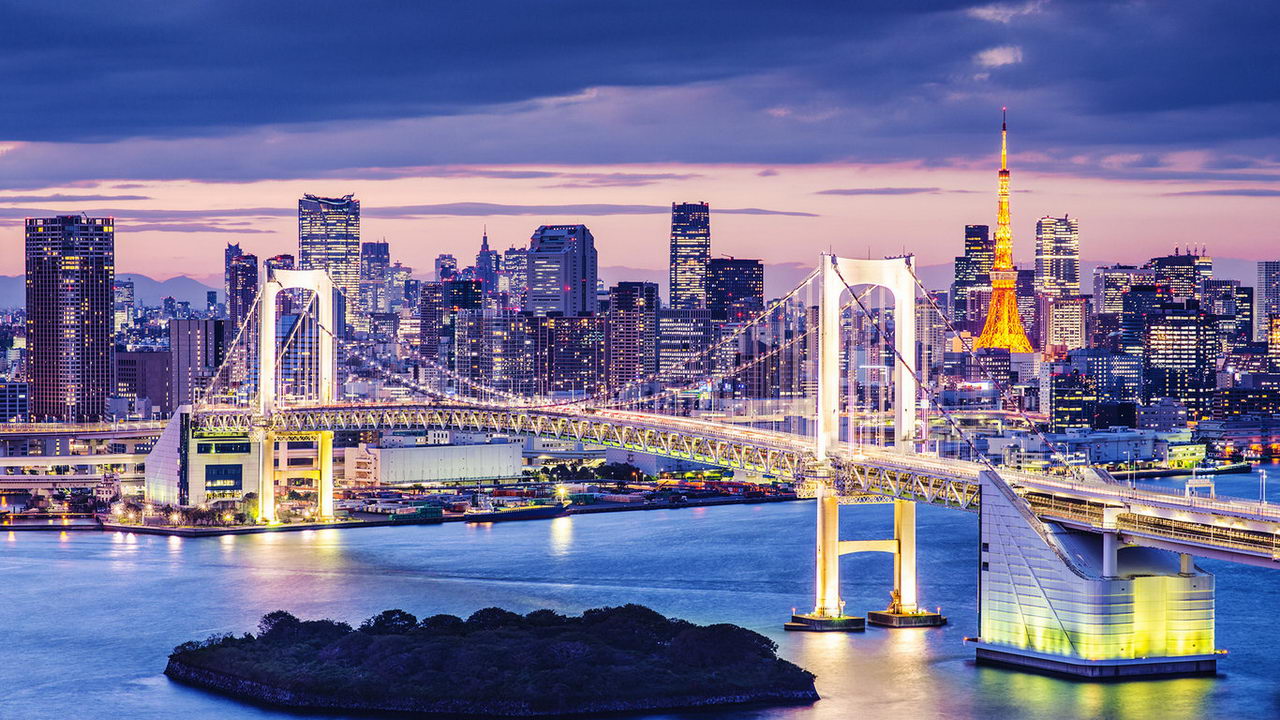
|
Hike the Northern Alps The breathtaking peaks of Japan’s Northern Alps are considered the country’s premier hiking grounds. And for good reason, visitors have a choice of easy day hikes or week-long adventures that would challenge the fittest of hikers. In the peak of summer, the most popular routes can crawl with weekend hikers, but come on a weekday or wait for autumn and visitors get to experience the Northern Alps’ jagged, nearly 10’000 foot peaks and virgin forests as nature unspoiled by crowds. |
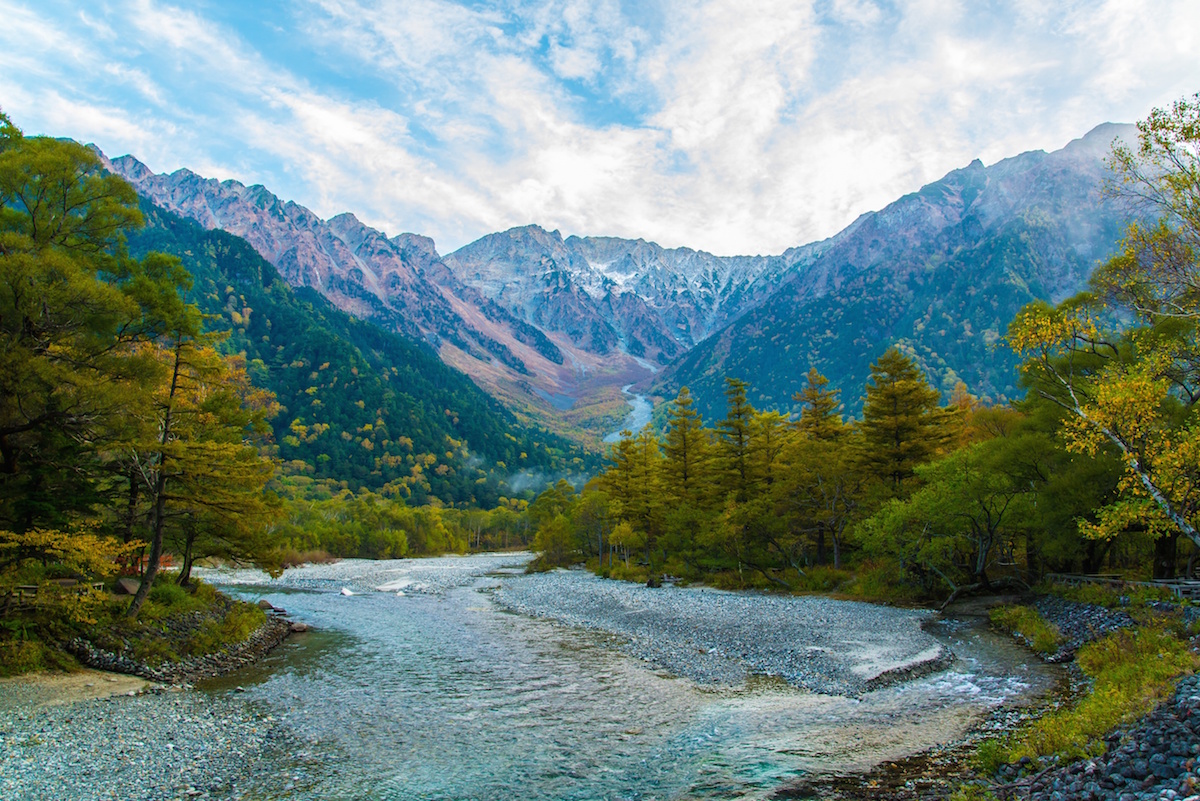 |
The Todaiji Temple in Nara
It is not only the world’s largest wooden building; it is home to the world’s largest bronze Buddha statue. Surrounded by beautiful gardens and wildlife, the Kegon school of Buddhism is centered here and the grounds hold many artifacts of Japanese and Buddhist history. Deer are allowed to freely roam the grounds as messengers of the Shinto gods.
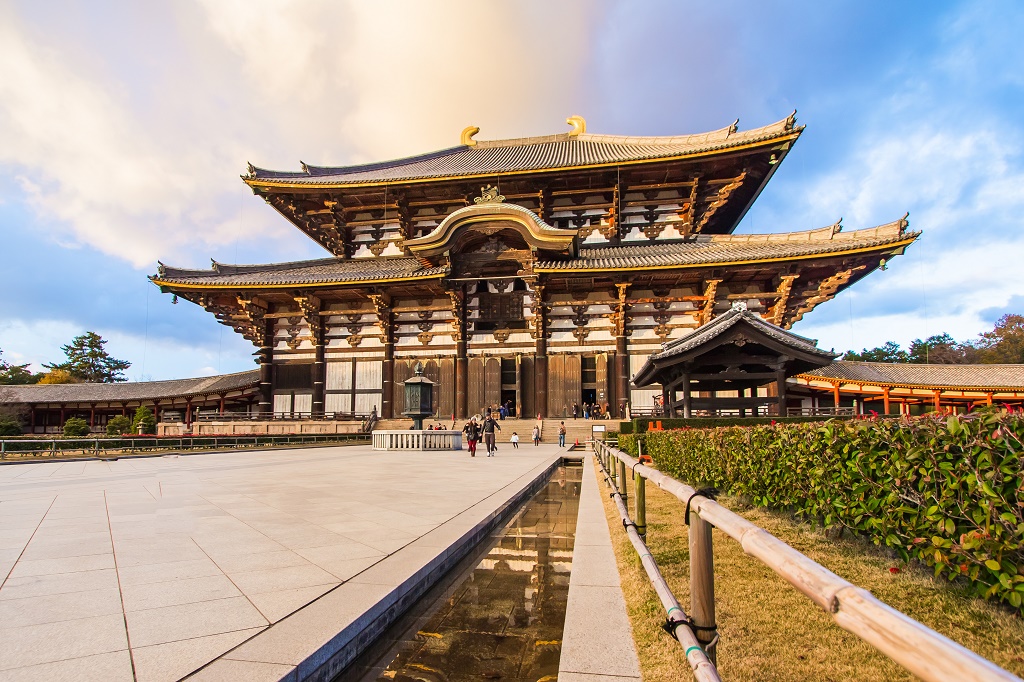
Things you shouldn’t miss in Japan!
-
Visit as many temples and shrines as possible
-
Attend a festival: Festivals are Japan at its best — the fun side of Japanese culture. With approximately 100,000 festivals going on each year it's usually possible to find something that matches your travel schedule.
-
Reconnect with nature through Hot Springs: It is the country's most popular travel activity by far. Be sure to familiarize yourself with onsen manners before your trip; otherwise something embarrassing might happen.
-
Partying and nightlife: Japanese people enjoy life. Tokyo's restaurants, bars, pubs, izakaya and clubs are busy every night of the week. Nightlife in Osaka, Nagoya, Sapporo, Kyoto, Kobe and Fukuoka is also fantastic.
-
Ginza shopping: Ginza is the largest luxury shopping area in Asia. If you only see one neighborhood in Tokyo, Ginza is a good choice.
-
Have a great Sushi experience: There is a big difference between western and Japanese sushi. Experiencing quality Japanese sushi is highly recommended. Once you try the good stuff you will never want to go back.
-
Drink Sake: It's possible to sample traditional Japanese rice wine (sake) at virtually any restaurant and bar in Japan. It's even available in vending machines.
-
Playing games at Game Arcades: There is no question about it: Japan has the best game arcades in the world.
-
Attend a Kabuki: A traditional Japanese theatre that incorporates dance into performances. It is known for its elaborate costumes and makeup. All roles both male and female are played by male actors. It's unlikely you will understand the performance completely, but most people end up enjoying the show.
-
Snowboarding and skiing
-
Shiatsu Massage: Japanese massage (Shiatsu) and Asian massage (such as Thai and Chinese) are most common. Massage is everywhere in Japan: hotels, department stores, shopping streets and entertainment districts.
-
Dine at a temple: Some Japanese temples have restaurants that offer traditional Japanese Buddhist cuisine known as Shojin Ryori. It is vegetarian, austere and bland.
-
Attend a music festival: Japan has several summer music festivals that are worth checking out. These include Summer Sonic, Fuji Rock and the Sado Earth Celebration.
Best cities of Japan
Tokyo
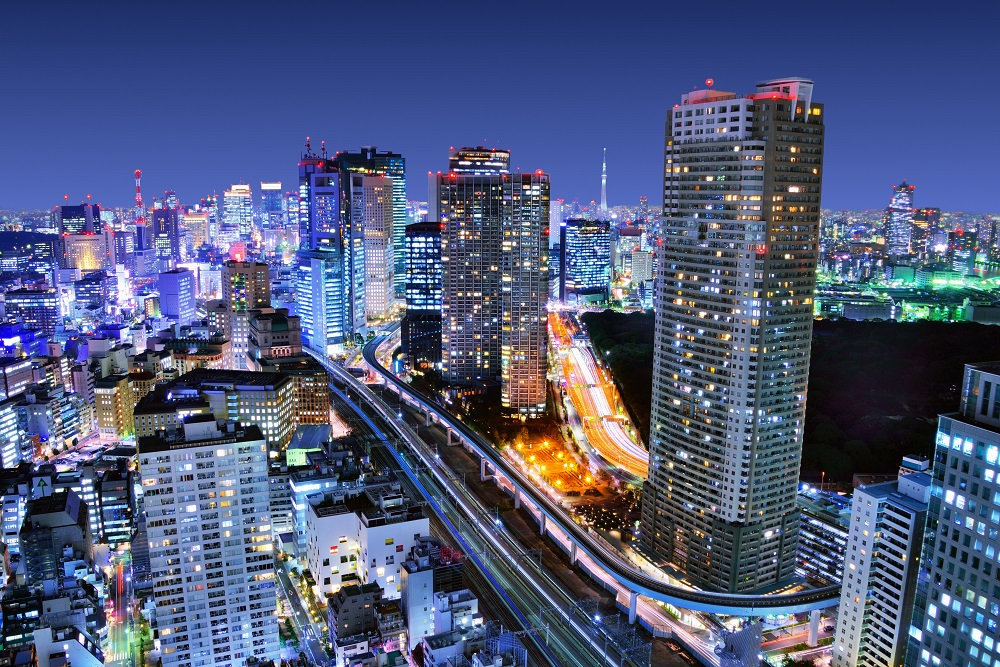
Yoking past and future, Tokyo dazzles with its traditional culture and passion for everything new. It is a modern city built on old patterns, and in the shadows of skyscrapers you can find anachronistic wooden shanty bars and quiet alleys, rough traditional festivals and lantern-lit yakitori (grilled chicken) stands. In older neighborhoods, you can shop for handicrafts made just as they have been for centuries, or wander down paved lanes where geisha once walked.
Kansai
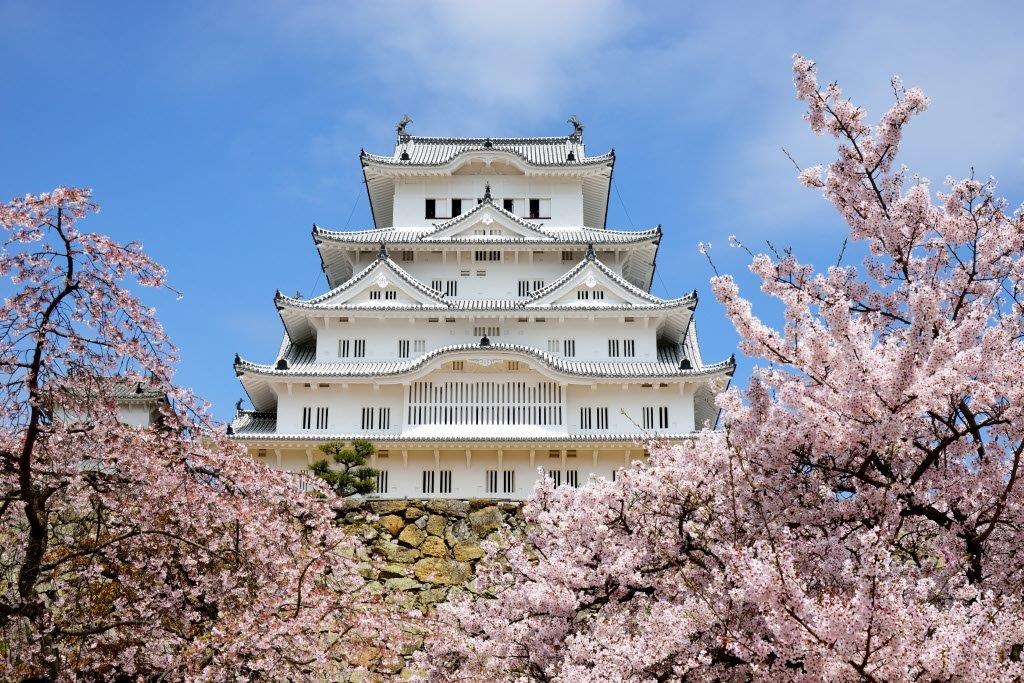
If you had to choose only one region of Japan to explore, Kansai would be an easy choice. It is the heart of Japan; nowhere else in the country can you find so much of historical and cultural interest in such a compact area. Kyoto and Osaka are the main cities of Kansai.
Kyoto

In Kyoto, the quiet temples, sublime gardens, colorful shrines and geisha dashing to secret liaisons. Few cities of this size offer such a range of excellent restaurants. Work your way through the entire spectrum of Japanese food, from impossibly refined cuisine known as kaiseki to popular cuisine. There is also a wide range of French, Italian and Chinese restaurants, where the famed Japanese attention to detail is paired with local ingredients to produce fantastic results. Best of all, many of Kyoto’s restaurants are in traditional wooden buildings, where you can gaze over intimate private gardens while you eat. There are said to be over 1000 Buddhist temples in Kyoto. You will find true masterpieces of religious architecture, such as the famed Golden Pavilion, and the spacious expanse of Higashi Hongan-ji.
Osaka
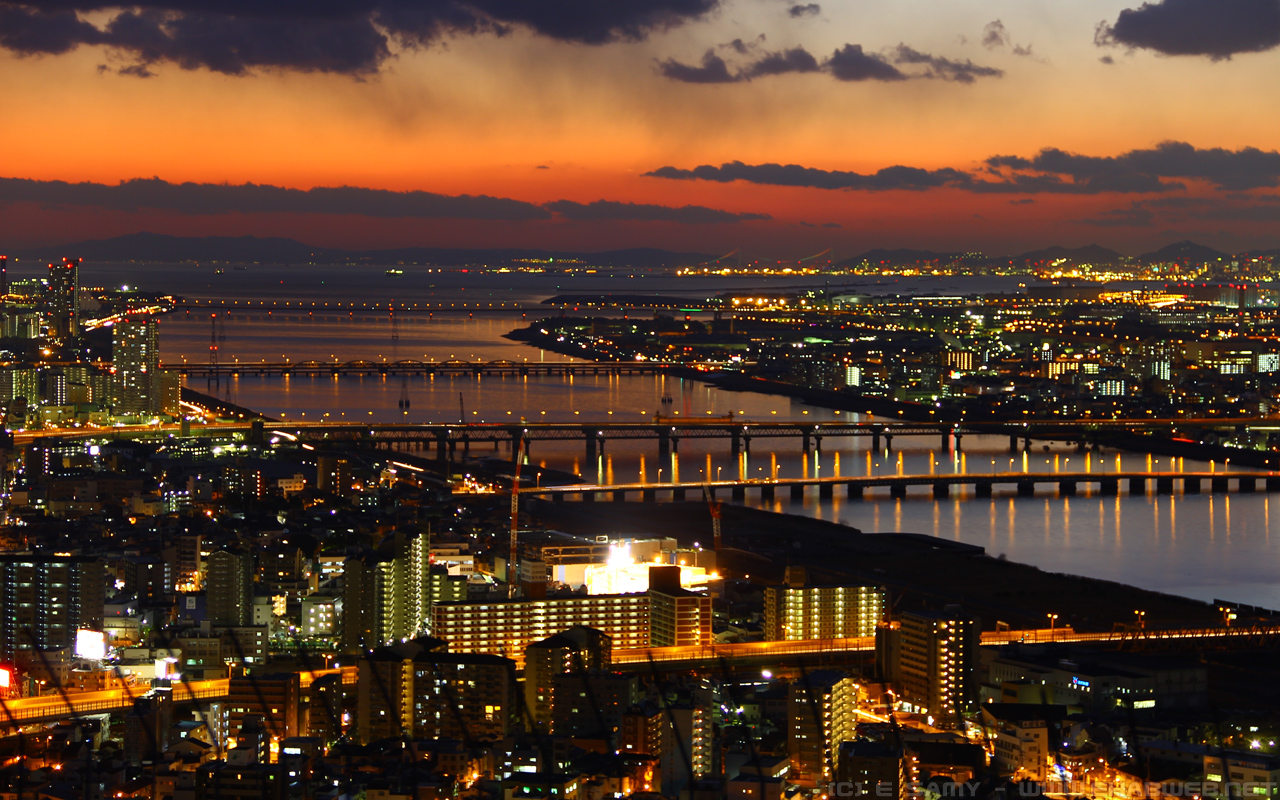
Japan's ultra-urban and hard-working Osaka is a brazen remedy to the fashion-forward fury of Tokyo and the prudish propriety of Kyoto. This longtime capital of commerce is filled with down-to- earth citizens speaking colorful Kansai-ben (Kansai dialect) and neon-clad streetscapes bursting with over-the-top 3D signage. Most of all, Osaka is famous for good food. The phrase kuidaore ('eat 'till you drop') is heard so frequently here that it is practically the city motto. Delicacies from okonomiyaki (savory pancakes) to conveyor-belt sushi were invented here and continue to thrive. Even if Osaka isn't particularly attractive, the city makes up for it with some architectural and cultural trinkets, pretty riversides, energetic shopping districts for intellectual and undemanding and refreshingly open residents.
Culture packages
Entering this website you automatically agree the following terms and conditions even if You are not a registered user of the site. Images shown on the website, country and travel specifications, as well as the webdesignes are subject to copyright protection, Elegant Enterprises are All rights reserved. Prohibited the website all or partial copy, store, use, distribution and sale, without the written consent of the copyright owner of this website (Elegant Enterprises)